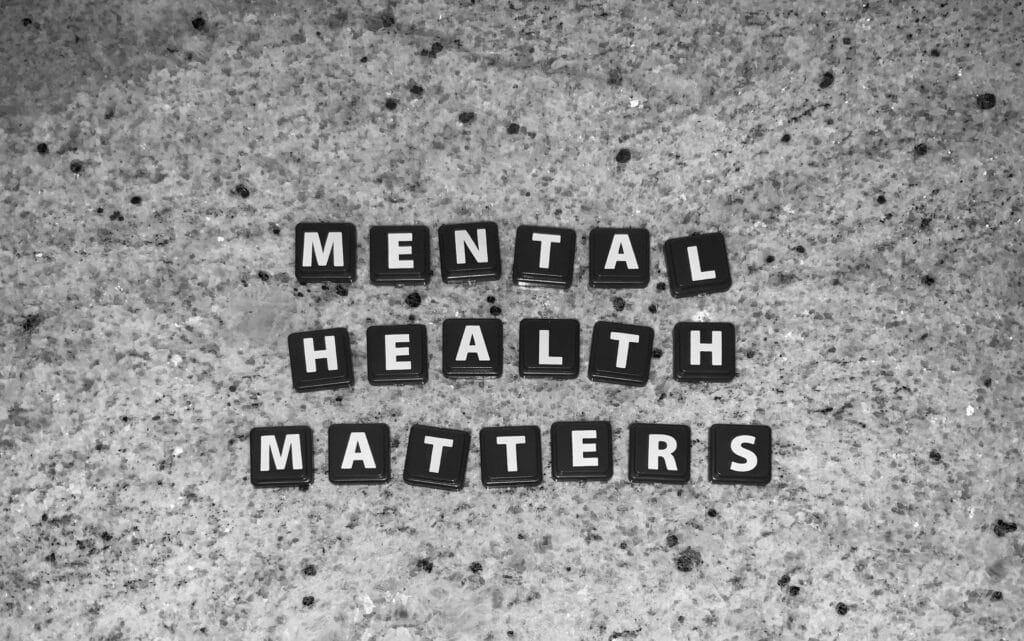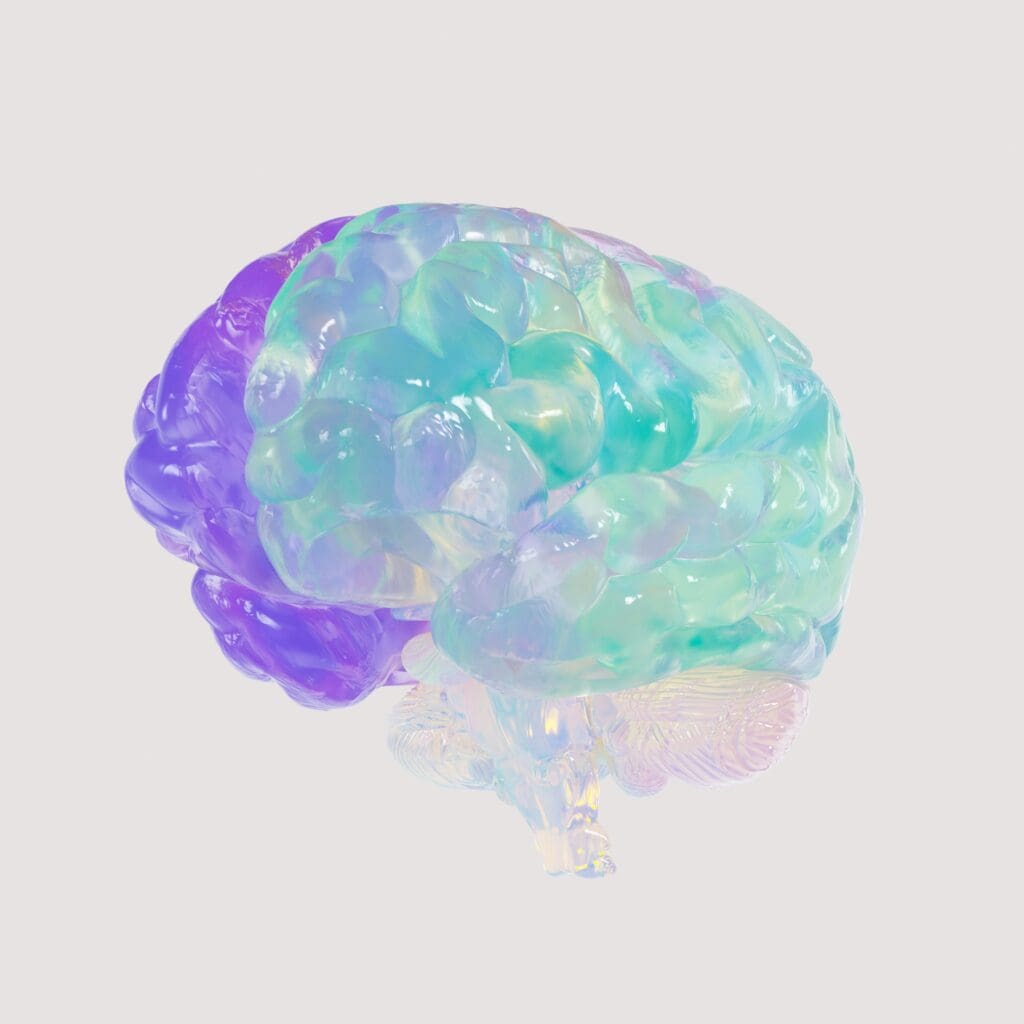Understanding Anxiety

Anxiety is a complex mental health condition that can significantly affect an individual’s daily life. It is often characterized by excessive worry, fear, or apprehension regarding various situations or events. Unlike normal stress, which can act as a motivator in everyday tasks, anxiety manifests as an overwhelming sense of dread that hinders one’s ability to function effectively. Distinguishing between anxiety and everyday stress is crucial in recognizing when professional support may be necessary.
There are several types of anxiety disorders, each with its own unique symptoms and implications. Generalized Anxiety Disorder (GAD) is marked by persistent, excessive worry about various aspects of life, including health, finances, and social interactions. Panic Disorder involves recurrent and unexpected panic attacks, characterized by intense fear and physical symptoms such as heart palpitations and shortness of breath. Social Anxiety Disorder grounds itself in the fear of social situations, leading to avoidance behaviors that can affect relationships and career opportunities. Other types include Specific Phobias, Obsessive-Compulsive Disorder (OCD), and Post-Traumatic Stress Disorder (PTSD), each presenting its own challenges and symptoms.
Common indicators of anxiety can range from psychological to physical manifestations. Individuals may experience emotional symptoms such as restlessness, irritability, and difficulties in concentrating, while physical symptoms might include fatigue, muscle tension, and sleep disturbances. Understanding these symptoms is essential not only for those experiencing anxiety but also for friends and family members who may wish to provide support. Recognizing anxiety as a legitimate mental health condition encourages a proactive approach towards treatment and management, promoting a healthier emotional state for those affected.
Identifying Triggers of Anxiety

Anxiety is often exacerbated by specific triggers that can be classified as either external or internal. Understanding these triggers is vital for effective anxiety management. External factors may include environments or situations that generate stress, while internal triggers often stem from an individual’s emotional state or past experiences. Self-awareness is essential in recognizing personal triggers, allowing individuals to develop coping strategies tailored to their unique circumstances.
External triggers can encompass a variety of situations, such as crowded places, public speaking, or significant life changes like job loss or moving. Each person’s response to these scenarios may vary widely, influenced by their past experiences. For instance, an individual who has had previous negative encounters in social settings might feel heightened anxiety in similar situations, even if their current environment is not threatening.
On the other hand, internal triggers are often rooted in one’s thoughts and emotions. Anxiety can be triggered by feelings of inadequacy, fear of failure, or overwhelming worry about uncertain futures. Past traumas or unresolved emotional conflicts may also contribute significantly to the anxiety experienced in daily life. This emphasizes the importance of introspection—individuals may benefit from reflecting on their thoughts and feelings to identify patterns and specific triggers for their anxiety.
Keeping a journal can be a practical tool in this process, enabling individuals to document situations that provoke anxiety and their corresponding feelings. Over time, patterns may emerge, illuminating the relationship between certain events or emotions and anxiety levels. This increased self-awareness equips individuals with the insights needed to manage their reactions effectively, making it a critical step in the journey toward anxiety management.
Practical Tips for Managing Anxiety

Anxiety is a common experience that can become overwhelming if not managed effectively. Fortunately, there are several practical strategies that individuals can incorporate into their daily routines to help mitigate anxiety symptoms. One of the first steps is mastering time management. By organizing daily tasks and prioritizing them, you can reduce feelings of being overwhelmed. Utilize tools such as to-do lists or digital calendars to clearly outline what needs to be accomplished, breaking larger projects into smaller, manageable tasks. This approach allows you to focus on one step at a time, promoting a sense of accomplishment.
Establishing healthy routines is essential in combating anxiety. A consistent schedule provides predictability, which can soothe the mind. Incorporate rituals such as waking up and going to bed at the same time each day. Engage in regular exercise, as physical activity is proven to boost mood and reduce anxiety levels. Even a short daily walk can significantly impact your mental well-being. Similarly, maintaining a balanced diet is crucial; certain foods can influence mood and energy levels. Aim to include whole grains, fruits, vegetables, and lean proteins in your meals, while limiting caffeine and sugar, which may exacerbate anxiety.
Beyond managing time and establishing routines, lifestyle changes can greatly benefit your mental health. Practicing mindfulness techniques, such as deep-breathing exercises or meditation, allows for a moment of pause to reset your thoughts. Additionally, fostering a supportive social network by connecting with friends or loved ones can provide comfort and perspective. Finally, don’t hesitate to seek professional help if anxiety persists. Therapy or counseling can offer valuable tools and support in navigating anxiety, leading to a more balanced life. By implementing these practical tips, you can take significant strides towards managing anxiety effectively.
Breathing Techniques and Their Benefits

Breathing techniques serve as powerful tools for managing anxiety, offering both immediate and long-term benefits. Engaging in structured breathing exercises can stimulate the body’s relaxation response, thus mitigating the physiological effects of anxiety. Among the most effective techniques are deep breathing, box breathing, and diaphragmatic breathing, each designed to promote tranquility and focus during stressful moments.
Deep breathing, also known as abdominal or belly breathing, can significantly reduce tension. This technique involves inhaling deeply through the nose, allowing the abdomen to expand completely, and then slowly exhaling through the mouth. Practicing deep breathing for just a few minutes can lower the heart rate and blood pressure, creating a sense of calm. This is particularly beneficial during periods of heightened anxiety, as it helps anchor the individual in the present moment.
Another effective method is box breathing, often utilized in therapeutic and performance settings. This technique consists of four simple steps: inhaling through the nose for a count of four, holding the breath for another four counts, exhaling through the mouth for a count of four, and then pausing before the next inhalation for an additional four counts. Repeating this cycle a few times can provide a rhythmic pace, effectively grounding the practitioner and alleviating feelings of panic or crisis.
Diaphragmatic breathing enhances oxygen exchange and helps with tension relief. To practice this, one should sit or lie down in a comfortable position, place one hand on their chest and the other on the abdomen, and breathe in deeply through the nose, ensuring the abdomen rises while the chest remains relatively still. Exhaling slowly through pursed lips allows one to feel a reassuring release of tension.
Incorporating these breathing exercises into daily routines or during moments of high anxiety can foster resilience, promote relaxation, and contribute positively to overall mental health. By mastering these techniques, individuals can equip themselves with effective strategies to counter anxiety.
The Role of Meditation and Mindfulness

Meditation and mindfulness are two powerful techniques recognized for their effectiveness in managing anxiety and stress. These practices encourage individuals to cultivate a sense of presence and awareness, allowing them to navigate their thoughts and feelings with greater clarity. By engaging in meditation, one can develop a deeper connection to the present moment, which is often overshadowed by anxious thoughts about the future or regrets from the past.
There are various forms of meditation that can be beneficial for anxiety management. Guided meditation, for instance, involves following verbal instructions provided by a teacher or recording, helping individuals focus their minds and ease their racing thoughts. This type of meditation is particularly helpful for those new to the practice, as it provides a structured approach. Conversely, loving-kindness meditation encourages practitioners to cultivate feelings of compassion and love towards themselves and others, promoting emotional well-being and reducing negative feelings associated with anxiety.
Mindfulness exercises, on the other hand, focus on bringing awareness to one’s current experiences, sensations, and thoughts. Techniques such as mindful breathing or body scanning can empower individuals to observe their anxiety without judgment, creating a space for acceptance rather than resistance. Incorporating these practices into daily routines can yield substantial health benefits, including reduced levels of stress hormones, enhanced emotional regulation, and improved overall mental health.
For those new to meditation and mindfulness, it is advisable to start with short sessions, perhaps five to ten minutes a day, gradually increasing the duration as one becomes more comfortable. Utilizing resources such as mobile applications or online tutorials can provide support and guidance. In forming a consistent practice, individuals may find a noticeable decrease in anxiety symptoms over time, paving the way for a more balanced and peaceful state of mind.
When to Seek Professional Help

Anxiety can be a natural response to stressful situations; however, it can become overwhelming for some individuals, requiring professional intervention. Recognizing the signs that anxiety has escalated beyond self-management is crucial. Common indicators include persistent feelings of dread, excessive worrying that interferes with daily life, difficulty concentrating, irritability, and physical symptoms such as headaches or stomachaches. If these symptoms disrupt your ability to function at work, school, or in social situations, it may be time to consult a mental health professional.
Several forms of therapy are effective in managing anxiety disorders, with Cognitive Behavioral Therapy (CBT) being one of the most widely recommended. CBT focuses on identifying and changing negative thought patterns and behaviors that contribute to anxiety. Exposure Therapy is another option, particularly effective for specific phobias and social anxiety, as it gradually exposes individuals to the source of their anxiety in a controlled environment, helping them to reduce their fear response over time.
When seeking therapy, it is essential to know what to expect during a counseling session. Initial sessions usually involve an assessment of your mental health history, discussing current symptoms, and setting goals for therapy. The therapist will work collaboratively with you to develop a personalized treatment plan that aligns with your specific needs. Remember that seeking help is a courageous step towards managing anxiety effectively. It is vital to normalize the process of asking for assistance, as it can lead to improved mental well-being and a better quality of life.
Additional Techniques for Lowering Stress Levels

Managing stress and anxiety effectively often requires a multi-faceted approach, as different techniques resonate with different individuals. Among the additional methods, art therapy stands out as an innovative way to express emotions and alleviate mental tension. Engaging in creative activities such as painting, drawing, or sculpting allows individuals to channel their feelings into tangible forms. This form of therapy not only fosters self-expression but also provides a calming effect, significantly reducing feelings of anxiety. By focusing on the creative process instead of overwhelming thoughts, participants often find relief from stress.
Another valuable technique is journaling. Writing down thoughts and feelings can serve as a powerful tool for understanding and processing emotions. By regularly documenting experiences and reflections, individuals create an opportunity for self-discovery and clarity. This practice not only aids in reducing anxiety but can also enhance emotional regulation, enabling individuals to confront their worries in a structured manner. Journaling encourages mindfulness, as writers often reflect on the present moment and articulate their feelings, which can be particularly beneficial for those grappling with stress.
Physical activities also play a crucial role in managing anxiety levels. Techniques such as yoga and tai chi combine movement, meditation, and controlled breathing, all of which contribute to calming the mind and body. Yoga promotes flexibility and strength while encouraging deep relaxation through poses and guided meditation. Conversely, tai chi focuses on fluid, gentle motions that enhance mental clarity and reduce stress. Both practices are accessible to individuals regardless of their fitness levels, making them excellent choices for anyone seeking to manage anxiety effectively.
Overall, the exploration and integration of various stress-reduction techniques can significantly enhance the individual’s ability to cope with anxiety. By experimenting with methods like art therapy, journaling, and physical activities, individuals can discover which practices best support their mental health and well-being.
Building a Support System

Establishing a robust support system is instrumental in managing anxiety effectively. Human connections, characterized by empathy and understanding, provide crucial emotional resources that can alleviate feelings of isolation often associated with anxiety disorders. Engaging with supportive friends and family members offers not only a listening ear but also the reassurance that one is not alone in their struggles. To begin cultivating this support network, it is essential to communicate openly about one’s experiences with anxiety. Sharing feelings can be daunting, yet it is vital to articulate how anxiety impacts daily life. Approaching conversations with clarity can help others understand the condition better.
It is advisable to choose receptive individuals who are likely to respond with compassion and support. These discussions may also pave the way for educational outreach to loved ones, fostering a more profound understanding of anxiety disorders. There is potential for misconceptions to be dispelled, leading to a more informed support system. Additionally, expressing needs clearly to these trusted individuals helps cultivate a supportive atmosphere, where anxiety can be acknowledged without judgment.
Beyond personal networks, joining support groups can be an effective strategy in further enhancing one’s support system. These groups offer a platform for individuals facing similar challenges, creating opportunities for shared experiences and coping techniques. Group settings often foster an environment of validation, where members can discuss their anxiety without the fear of stigma. Engaging with others who understand makes discussions about anxiety less intimidating, allowing for deeper emotional connections and the sharing of practical strategies for managing symptoms.
Ultimately, building and maintaining a strong support system is a key aspect of anxiety management. By inviting friends, family, and community members into the dialogue, individuals can create a nurturing environment that promotes healing and resilience.
Long-term Strategies for Managing Anxiety

Managing anxiety effectively requires a comprehensive approach that extends beyond immediate coping mechanisms. Long-term strategies involve adopting lifestyle changes and self-care practices that contribute to sustained well-being. Consistent self-care is paramount, as it forms the foundation for improved mental health. This includes establishing a routine that incorporates regular physical activity, balanced nutrition, and sufficient sleep. Engaging in exercises like yoga or tai chi can promote relaxation and reduce stress levels, ultimately leading to a more stable emotional state.
Another vital aspect of anxiety management is setting realistic goals. Break down larger objectives into smaller, manageable tasks, which can help reduce overwhelm and foster a sense of accomplishment. This approach instills motivation and encourages gradual progression. By tracking your progress in reaching these goals, you can identify patterns and recognize achievements, which can be empowering and uplifting during moments of anxiety.
Additionally, staying informed about mental health can greatly enhance one’s ability to manage anxiety. Educating oneself on various anxiety disorders, their symptoms, and treatment options can demystify the condition and allow for more informed decision-making. Furthermore, connecting with support groups or mental health professionals can provide valuable insights and coping strategies. Remember that managing anxiety is an ongoing journey; maintaining patience and compassion with oneself is crucial. Individual experiences vary, and finding what works best may take time. Recognizing that setbacks may occur is perfectly normal and should be met with understanding, rather than self-criticism.
In summary, incorporating long-term strategies such as consistent self-care, realistic goal-setting, and continuous education about mental health can significantly aid in managing anxiety. Establishing these practices can lead to a more balanced and fulfilling life, despite the presence of anxiety.


Pingback: Unlocking the Miracle of Self-Confidence in Education